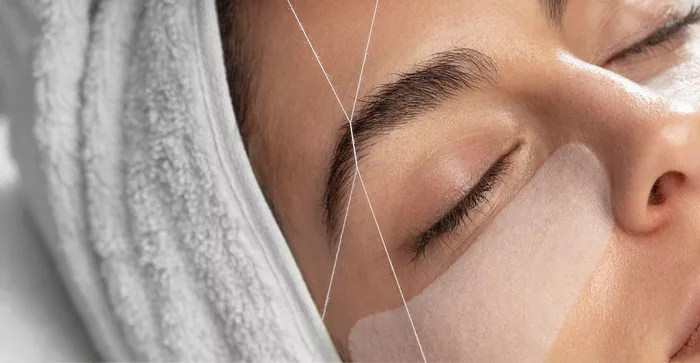Facial threading is an ancient hair removal technique that has gained popularity in recent years for its precision and long-lasting results. This method originated in the Middle East and South Asia and has been practiced for centuries as a way to remove unwanted facial hair and shape eyebrows. In this article, we will delve into the world of facial threading, discussing its origins, benefits, and the procedure itself, to provide you with a comprehensive understanding of this popular beauty practice.
The Origins of Facial Threading
Facial threading has a rich cultural heritage, originating from the Middle East and South Asia. It has been a part of the beauty rituals in countries like India, Pakistan, Iran, and Egypt for centuries. In these regions, threading is not only used for hair removal but also as a form of art to shape and define eyebrows.
The Benefits of Facial Threading
Facial threading offers several advantages over other hair removal techniques. Here are some of the key benefits:
-
Precision
One of the main advantages of facial threading is its precision. The technique allows for meticulous hair removal, targeting individual hairs and even the finest and shortest ones. This precision makes it an ideal choice for shaping eyebrows and achieving clean lines.
-
Long-Lasting Results
Facial threading removes hair from the root, resulting in slower regrowth compared to methods like shaving or using depilatory creams. With regular threading sessions, you can enjoy smooth skin and well-defined features for an extended period.
-
Safety
Facial threading is a safe and gentle method of hair removal. It does not involve the use of chemicals, heat, or harsh ingredients that can irritate the skin. The thread used in the process is typically made of cotton or polyester, minimizing the risk of allergic reactions.
-
Minimal Skin Irritation
Threading is known for causing minimal skin irritation compared to other hair removal methods. The gentle twisting and pulling motion of the thread do not disrupt the skin’s surface, making it suitable for individuals with sensitive skin.
-
No Chemicals or Residue
Unlike waxing or depilatory creams, facial threading does not involve the use of chemicals that can leave residue on the skin. It is a natural and non-invasive method that leaves the skin clean and free from unwanted substances.
The Facial Threading Procedure
Facial threading is typically performed by skilled technicians or estheticians who have undergone training in the technique. The procedure involves the following steps:
- Preparation: The technician begins by cleansing the skin to remove any makeup, oils, or impurities. This ensures a clean surface for threading and reduces the risk of infections.
- Prepping the Thread: A long strand of cotton or polyester thread is doubled and twisted, creating a loop in the middle. The technician holds the thread with both hands, with one hand moving while the other remains stationary.
- Hair Removal: The technician places the twisted thread on the targeted area of the face and skillfully maneuvers it, creating a twisting motion. The twisted thread catches and lifts the unwanted hair, pulling it out from the root.
- Repeat: The technician continues the threading process, moving across the desired areas of the face, such as the eyebrows, upper lip, chin, and cheeks. The thread is carefully maneuvered to remove hair from specific areas while leaving the desired hair untouched.
- Post-Thread Care: After threading, a soothing gel or lotion may be applied to calm the skin and minimize any temporary redness or sensitivity.
It is important to note that while facial threading is generally safe, individuals with certain skin conditions, such as acne or sunburn, should consult with a dermatologist before undergoing the procedure to avoid any potential complications.
Maintaining Results and Frequency of Sessions
The longevity of the results obtained from facial threading varies from person to person. On average, the effects can last anywhere from two to six weeks, depending on individual hair growth patterns. Regular threading sessions are recommended to maintain smooth and defined facial features. The frequency of sessions can be determined based on personal preferences and hair growth rate.
Conclusion
Facial threading is an ancient hair removal technique that offers precision, long-lasting results, and minimal skin irritation. With its roots in Middle Eastern and South Asian cultures, this practice has become increasingly popular worldwide. The precise removal of unwanted facial hair and the ability to shape eyebrows with accuracy make facial threading a preferred choice for many individuals seeking well-defined features. If you’re looking for a natural and effective method of hair removal, consider exploring facial threading and consult with a skilled technician or esthetician to experience the benefits of this ancient beauty practice.

